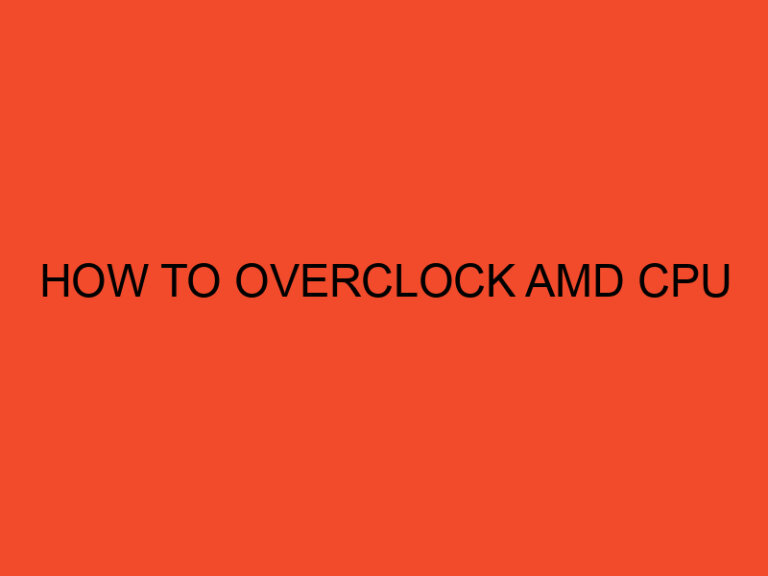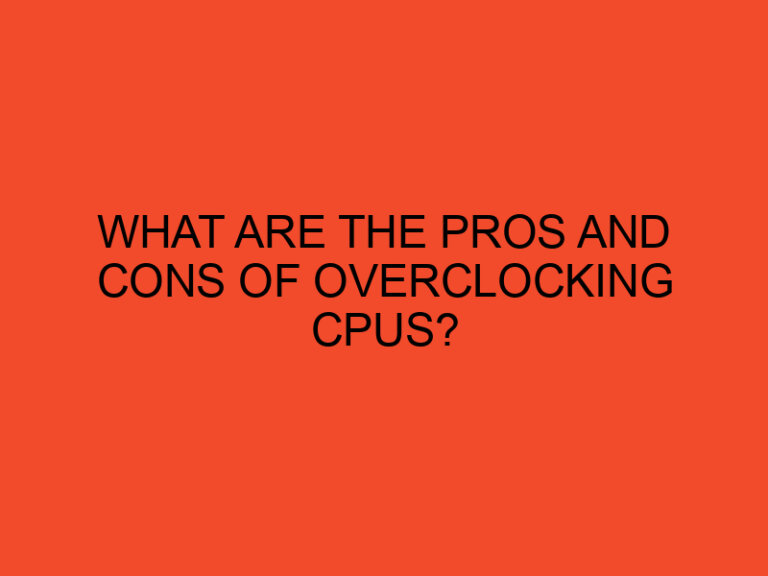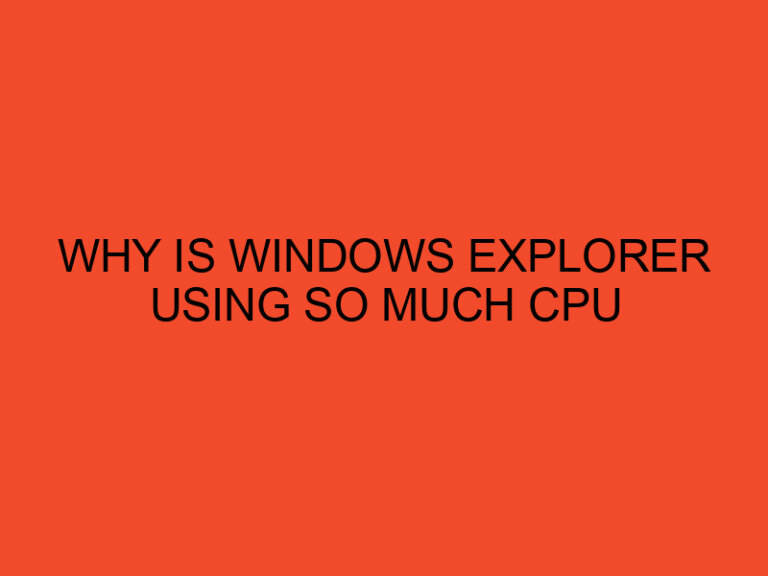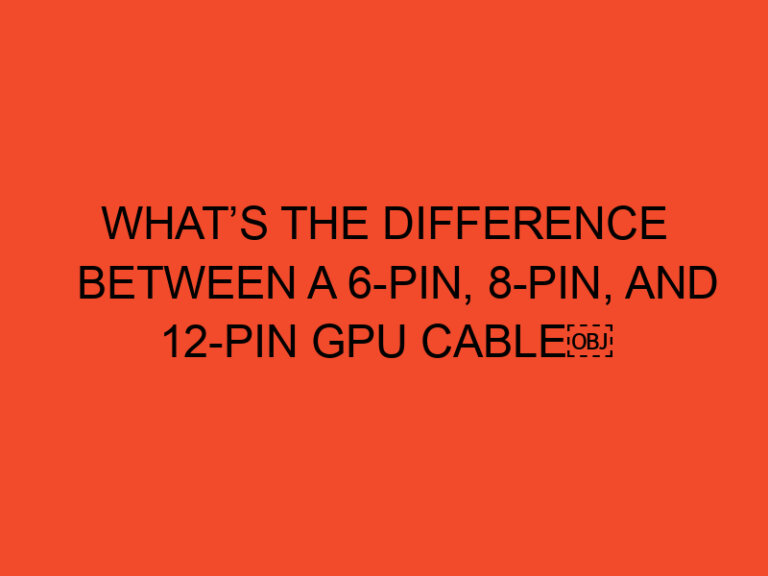When it comes to computing, there are a lot of terms that can be confusing, especially for those who are not tech-savvy. Two terms that often get mixed up are CPU and VCPU. Although they sound similar, there are significant differences between the two. In this article, we will discuss the differences between CPU and VCPU in detail.
Table of Contents
What is a CPU?
The CPU, or Central Processing Unit, is the “brain” of a computer. It is responsible for executing instructions and performing calculations. Every computer has a CPU, which is a physical chip that is located on the motherboard. The CPU is responsible for processing data, and it determines how fast a computer can perform tasks.
The CPU has multiple cores, which are independent processing units that allow the CPU to perform multiple tasks simultaneously. CPUs come in different types, and they are classified based on their architecture, clock speed, and number of cores.
What is a VCPU?
A VCPU, or Virtual Central Processing Unit, is a virtual processor that is used in a virtualized environment. Virtualization allows multiple virtual machines to run on a single physical server. Each virtual machine is assigned one or more VCPUs, which are then mapped to the physical CPUs of the server.
VCPUs are created by the hypervisor, which is a layer of software that manages the virtual machines. The hypervisor allocates resources, such as CPU, memory, and storage, to the virtual machines based on their requirements.
The Differences Between CPU and VCPU
Physical vs. Virtual
The most significant difference between CPU and VCPU is that CPU is a physical chip that is installed on the motherboard, while VCPU is a virtual processor that is created by the hypervisor. A physical CPU can be used in both virtualized and non-virtualized environments, while a VCPU is only used in a virtualized environment.
Resource Allocation
In a non-virtualized environment, the CPU is dedicated to a single computer, which means that all of its resources are available to that computer. In a virtualized environment, multiple virtual machines share the same physical CPU, which means that the resources of the CPU are divided between the virtual machines.
The hypervisor manages the resource allocation, and it ensures that each virtual machine gets the resources it needs. If a virtual machine requires more CPU resources, the hypervisor can allocate more VCPUs to that machine.
Performance
The performance of a CPU is determined by its clock speed, the number of cores, and the architecture. A higher clock speed and more cores generally result in better performance. The performance of a VCPU depends on the performance of the physical CPU that it is mapped to.
In a virtualized environment, the performance of a VCPU can be affected by the resource allocation. If multiple virtual machines are competing for the same CPU resources, the performance of each virtual machine can be impacted.
Flexibility
One of the advantages of virtualization is the flexibility it provides. With virtualization, it is easy to create, configure, and manage virtual machines. Adding or removing resources, such as VCPUs, memory, and storage, can be done without affecting other virtual machines or the physical server.
In contrast, upgrading or replacing a physical CPU can be a complicated and expensive process, especially in a server environment.
Cost
The cost of a CPU depends on its performance, the number of cores, and the brand. CPUs can be expensive, especially for high-end models that are used in servers or workstations.
On the other hand, VCPUs are a virtual resource that is created by the hypervisor. The cost of using VCPUs depends on the virtualization software and the license model. In many cases, VCPUs are included in the cost of the virtualization software or the cloud service.
How to Choose Between CPU and VCPU?
Choosing between CPU and VCPU depends on the requirements of the workload and the environment. In a non-virtualized environment, a physical CPU is the only option. In a virtualized environment, VCPUs are used to run virtual machines.
The number of VCPUs required for a virtual machine depends on the workload and the performance requirements. For example, a virtual machine that runs a database server or a high-traffic web server may require multiple VCPUs to handle the workload.
Conclusion
In conclusion, the CPU and VCPU are two different concepts in computing that are often confused. A CPU is a physical chip that is installed on the motherboard, while a VCPU is a virtual processor that is used in a virtualized environment.
The main differences between CPU and VCPU are the physical vs. virtual nature, resource allocation, performance, flexibility, and cost. Choosing between CPU and VCPU depends on the requirements of the workload and the environment.
FAQs
- What is the function of a CPU?
- The CPU is responsible for executing instructions and performing calculations.
- What is the function of a VCPU?
- A VCPU is a virtual processor that is used in a virtualized environment.
- How many VCPUs can I assign to a virtual machine?
- The number of VCPUs that can be assigned to a virtual machine depends on the virtualization software and the physical resources of the server.
- Is VCPU better than CPU?
- VCPU and CPU serve different purposes, and the choice depends on the requirements of the workload and the environment.
- Can a VCPU run faster than a CPU?
- No, the performance of a VCPU depends on the performance of the physical CPU that it is mapped to.






